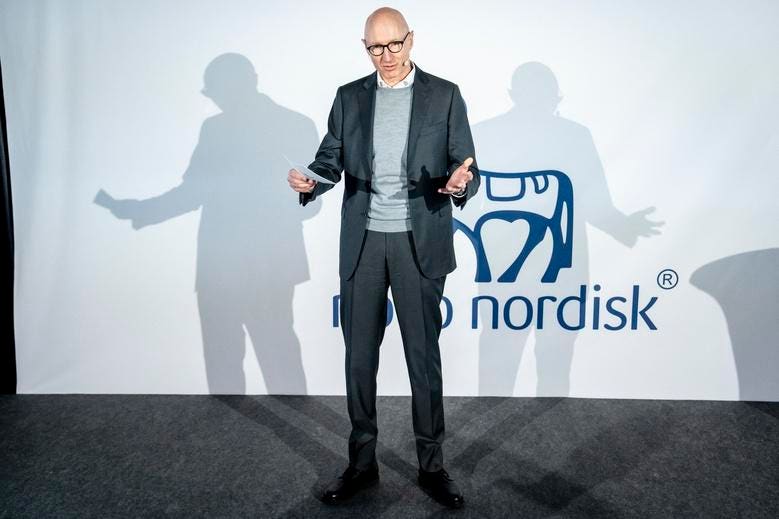Novo Nordisk (NVO), a Danish pharmaceutical company renowned for its diabetes and obesity treatments, has experienced a volatile stock performance in recent years, mirroring broader market turbulence. While the company’s share price enjoyed significant gains, reaching a peak of over $145 in June 2024, it subsequently plummeted nearly 40% to around $89 per share. This decline contrasts sharply with the performance of its closest competitor, Eli Lilly, whose stock experienced a more moderate 15% drop during the same period. NVO’s stock performance since early June 2022, just before the US Federal Reserve initiated interest rate hikes, shows a 60% increase, outperforming the S&P 500’s 45% gain. This outperformance is primarily attributed to the escalating sales of Novo Nordisk’s groundbreaking obesity drugs.
However, this success story took a hit in late December 2024, when NVO’s stock plunged over 20% in a single day following disappointing results from a late-stage clinical trial for its promising obesity treatment, CagriSema. The trial revealed a weight reduction of 22.7% among patients, falling short of the company’s targeted 25%. This setback compounded pre-existing concerns surrounding slower-than-anticipated sales growth for its obesity drugs, further evidenced by the company missing both revenue and earnings estimates in Q3 2024. This confluence of factors contributed to the stock’s recent struggles.
The backdrop of NVO’s performance is the broader economic landscape characterized by the 2022 inflation shock and subsequent Federal Reserve interventions. The inflation shock, triggered by a combination of increased money supply, supply chain disruptions, and geopolitical tensions (especially the war in Ukraine), led to soaring inflation rates, peaking at a 40-year high of 9% in June 2022. The Fed’s response, a series of aggressive interest rate hikes, initially offered some respite to the S&P 500, but was followed by further declines. This period of economic uncertainty significantly impacted market sentiment and contributed to the volatility witnessed in NVO’s stock price. The Fed’s subsequent actions, including holding rates steady and then cutting them by 100 basis points, coupled with a more hawkish outlook for 2025, further contributed to market uncertainty.
Comparing this recent turbulence to the 2007-2008 financial crisis reveals interesting parallels. During the 2008 crisis, NVO stock fell by 40% from its pre-crisis peak, mirroring its recent decline. However, it subsequently recovered by 56% in the following year, demonstrating resilience in the face of economic hardship. The S&P 500, on the other hand, experienced a steeper decline of 51% during the crisis, followed by a 48% recovery. This historical data provides some context for understanding NVO’s recent performance and potential for recovery.
Despite the recent setbacks, Novo Nordisk’s underlying fundamentals remain strong. The company’s revenue more than doubled between 2020 and the last twelve-month period ending in 2024, driven primarily by the success of its diabetes and obesity drugs, Ozempic and Wegovy. Ozempic sales witnessed a staggering 4.5-fold increase, while Wegovy, launched in 2021, rapidly reached substantial sales figures. This revenue growth, coupled with expanding operating margins, resulted in significant increases in earnings per share. Moreover, Novo Nordisk maintains a healthy financial position, with a substantial cash cushion and positive net debt, indicating its ability to weather the ongoing economic uncertainties.
Looking ahead, despite the recent challenges, there are grounds for optimism regarding NVO’s stock price. Analysts’ average price target suggests a significant upside potential of 45% from its current level. Furthermore, NVO’s historical performance, particularly its resilience during the 2008 financial crisis and its consistent outperformance of the broader market in recent years, suggests a capacity for recovery. While the CagriSema setback presents a headwind, the significant price correction may have already priced in these concerns. The company’s strong fundamentals, driven by the continued demand for its innovative treatments, position it for potential future growth.
Furthermore, Novo Nordisk’s financial health, indicated by its robust cash position and positive net debt, provides a strong foundation to navigate the current uncertain economic environment. While the Fed’s actions and outlook have introduced volatility into the market, the company’s underlying strength and growth potential suggest it is well-positioned for long-term success. The current share price, significantly discounted from its peak, may present an attractive entry point for investors with a long-term perspective. Comparisons with peers like Eli Lilly, and consideration of broader market trends, can provide further insights for informed investment decisions. Diversified investment strategies, such as those offered by Trefis’ High-Quality Portfolio, might offer less volatile returns compared to individual stocks. Ultimately, careful analysis of both company-specific factors and broader market dynamics is crucial for evaluating investment opportunities in Novo Nordisk and similar companies.

